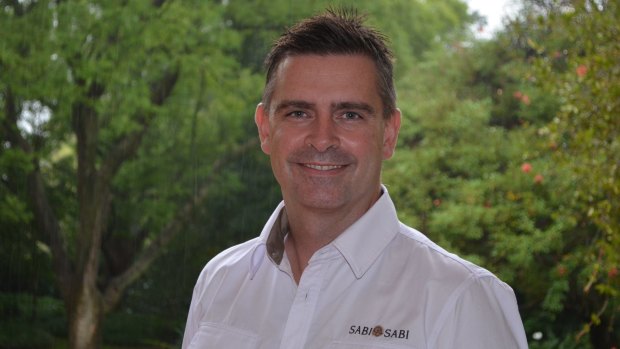This was published 4 years ago
Five things to remember when planning a South African safari

Jacques Smit from Sabi Sabi Private Game Reserve, part of the greater Kruger National Park.
JACQUES SMIT
Originally from the Elgin Valley in the Cape, Jacques Smit is a passionate advocate for wildlife conservation and South Africa. He has worked as a safari guide in Southern Africa and is now marketing director for Sabi Sabi Private Game Reserve. See sabisabi.com
STEP ONE
Use an African specialist to help design your safari on a public or private reserve. Choose operations with an ethical sustainable philosophy and proven community program, such as involvement in education, sporting or care initiatives for neighbouring communities. Private reserves such as Sabi Sabi are part of the greater Kruger National Park, there being no fences between them. They offer highly-trained rangers and trackers, control the number of vehicles in each sighting (we aim for no more than two vehicles at a time viewing elephants or rhinos) and aim to manage the environment so that the animals feel comfortable.
STEP TWO
Etiquette and respect towards the environment is rule number one. So do nothing to interfere with the animals' natural surrounds, and nothing to allow that animal to associate our presence with stress. Most private game reserve safaris are in off-road open safari vehicles for close encounters, whereas most vehicles in the national parks are covered, as they travel on public roads and by law must be covered. There's no standing up in the safari vehicle, as by doing so, you break the shape of the vehicle. Put cellphones on silent, and no leaning out of the vehicle to get the perfect selfie. There's also no calling, definitely no feeding any animals and, at times, flash photography may be banned and total silence required. We are guests in their environment – respect it.
STEP THREE
There really is no "better time" to travel. The rainy season is spring/summer, with plenty of water and lush bush, the migratory birds have returned and food is aplenty. Autumn and winter are equally beautiful: grasses are lower and wildlife spotting is focused around water sources, while the night skies in winter are spectacular. Ultimately, it depends on what it is you are combining your safari experience with that will determine your "best time". Cape Town, Victoria Falls, a beach resort in Mozambique?
STEP FOUR
Allow at least two to three full days to absorb nature, enjoy multiple safaris and also take an environmental walking safari, which is an hour or two on foot with your armed ranger getting to know the small stuff. The most common thing we hear from any Australian who has visited is, "had I known what we were in for – we would have stayed at least another night".
STEP FIVE
Follow your safari team's social media sites. Many of us post what happens on our reserves, so if you are planning a year out, look at what was happening a year before for a pretty good idea of what to expect. You'll often also find photography tips, blogs, daily temperatures and packing tips.
Sign up for the Traveller Deals newsletter
Get exclusive travel deals delivered straight to your inbox. Sign up now.